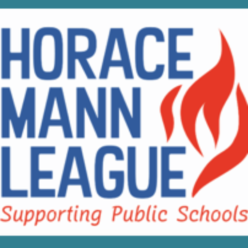New study finds U.S. has the world’s most educated workforce—but students face unparalleled levels of poverty, inequity and violence
Washington, DC. January 20– A new study released today challenges the practice of ranking nations by educational test scores and questions conventional wisdom that the U.S.educational system has fallen badly behind school systems abroad.
In their report, School Performance in Context: The Iceberg Effect, the Horace Mann League (HML) and the National Superintendents Roundtable examined six dimensions related to student performance—equity, social stress, support for families, support for schools, student outcomes, and system outcomes—in the G-7 nations (Canada, France, Germany, Italy, Japan, the United Kingdom and the United States) plus Finland and China. They then examined 24 “indicators” within those dimensions.
Of the nine nations, the United States remains the wealthiest with the most highly educated workforce, based on the number of years of school completed, and the proportion of adults with high school diplomas and bachelor’s degrees.
“Many policymakers and business leaders fret that America has fallen behind Europe and China, but our research does not bear that out,” said James Harvey, executive director of the National Superintendents Roundtable.
Despite high educational levels, the United States also reflects high levels of economic inequity and social stress compared to the other nations. All are related to student performance. Measures included rates of childhood poverty, income inequality and violence. For example, in American public schools today, the rate of childhood poverty is five times greater than it is in Finland. Rates of violent death are 13 times greater than the average for the other nations, with children in some communities reporting they have witnessed shootings, knifings, and beatings as “ordinary, everyday events.”
The study is a unique analysis, which for the first time compares K-12 education internationally on an array of social and economic indicators, not just test scores. The goal was to look at the whole iceberg, not just the tip—and provide a clearer snapshot of each country’s performance, including its wealth, diversity, community safety, and support for families and schools.
Some key findings:
Economic Equity: The United States and China demonstrate the greatest gaps between rich and poor. The U.S. also contends with remarkably high rates of income inequality and childhood poverty.
Social Stress: The U.S.reported the highest rates of violent death and teen pregnancy, and came in second for death rates from drug abuse. The U.S.is also one of the most diverse nations with many immigrant students, suggesting English may not be their first language.
Support for Families: The U.S. performed in the lowest third on public spending for services that benefit children and families, including preschool.
Support for Schools: Americans seem willing to invest in education: The U.S. leads the nine-nation group in spending per student, but the national estimates may not be truly comparable. U.S. teachers spend about 40 percent more time in the classroom than their peers in the comparison countries.
Student Outcomes: Performance in American elementary schools is promising, while middle school performance can be improved. U.S. students excel in 4th grade reading and high school graduation rates, but perform less well in reading at age 15. All nations demonstrate an achievement gap based on students’ family income and socio-economic status.
System Outcomes: The U.S. leads these nations in educational levels of its adult workforce. Measures included years of schooling completed and the proportion of adults with high-school diplomas and bachelor’s degrees. American students also make up 25 percent of the world’s top students in science at age 15, followed by Japan at 13 percent.
“Too often, we narrow our focus to a few things that can be easily tested. To avoid that scoreboard mentality, we need to look at many measures important to shaping our future citizens. Treating education as a horse race doesn’t work,” said HML President Gary Marx.
A call for more nuanced assessments
American policymakers from both political parties have a history of relying on large, international assessments to judge United States’ performance in education. In 2013, the press reported that American students were falling behind when compared to 61 other countries and a few cities including Shanghai. In that comparative assessment—called the Program for International Student Assessment—PISA controversially reported superior scores for Shanghai.
“We don’t oppose using international assessments as one measure of performance. But as educators and policymakers, we need to compare ourselves with similar nations and on a broader set of indicators that put school performance in context—not just a single number in an international ranking,” said Harvey.
“Our study suggests the U.S. has the most educated workforce, yet students confront shockingly high rates of poverty and violence. Research shows that those larger issues, outside the classroom, are serious threats to student learning,” noted HML Executive Director Jack McKay.
The report, a summary and a video are available at: www.superintendentsforum.org and www.hmleague.org.
